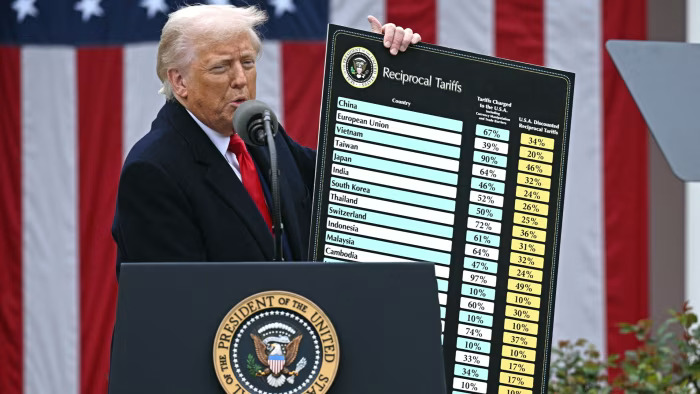In a dramatic shift in U.S. trade policy, President Donald Trump has imposed a sweeping 10% baseline tariff on nearly all imports, effective April 5, 2025. The move, which aims to rebalance trade relationships and protect American industries, has sparked intense global reactions and promises of retaliatory measures from key trading partners.
The Breakdown of New Tariffs

Under the new tariff structure, specific countries will face even higher levies:
- China: 34% (up from 25%)
- Japan: 24%
- India: 26%
- European Union: 20%
This unprecedented tariff increase has sent the average U.S. tariff rate soaring to 22%, a dramatic jump from just 2.5% in 2024. Gold, aluminum, and steel are among the few exceptions, remaining tariff-free.
The Highest Tariffs in Over a Century
The last time tariffs were this high was in 1910, before global trade became the foundation of modern economies. This move is expected to have a significant impact on consumer prices, supply chains, and international trade relationships.
Global Response and Retaliation
America’s trading partners have reacted swiftly:
- Canada and Mexico will maintain their existing 25% tariffs on U.S. goods.
- The European Union has vowed to introduce countermeasures, likely targeting U.S. agricultural and tech exports.
- China has promised retaliatory tariffs of its own, which could escalate tensions between the world’s two largest economies.
Economic Implications
For American Consumers
Higher tariffs mean higher costs for imported goods, which could lead to increased prices on everyday products, from electronics to clothing. U.S. businesses reliant on foreign components may pass these costs onto consumers.
For U.S. Manufacturers
While the tariffs may offer some protection for American industries, they also risk disrupting supply chains and increasing costs for manufacturers who rely on foreign parts and materials.
For Global Trade
With retaliatory tariffs on the horizon, U.S. exports—especially in industries like agriculture, technology, and automobiles—could suffer significant losses in foreign markets. This could lead to a trade war reminiscent of past economic downturns caused by protectionist policies.
What’s Next?
The success or failure of Trump’s “Reciprocal Tariff” strategy will depend on how other nations respond and whether U.S. businesses and consumers can absorb the impact. With global trade on edge, the coming months could redefine America’s economic landscape.